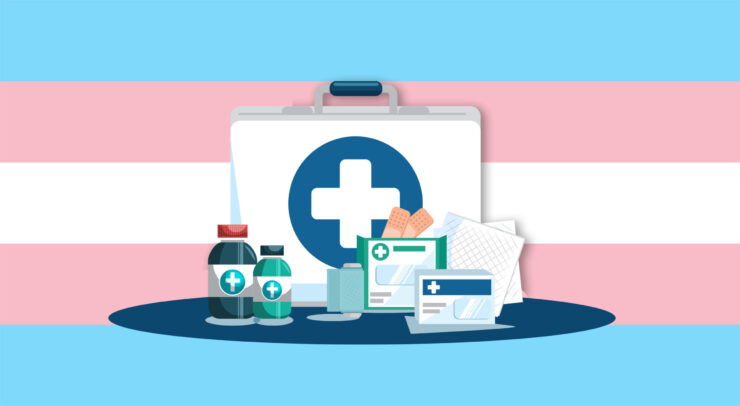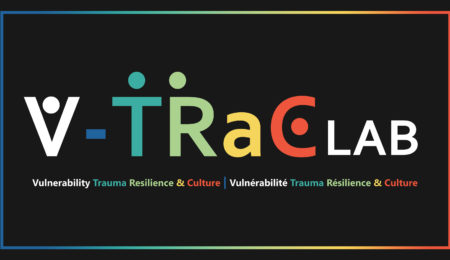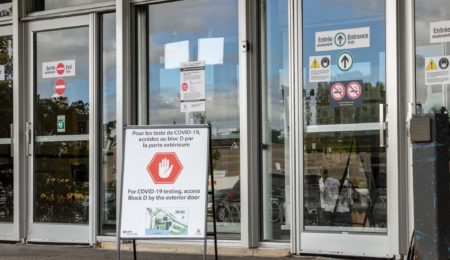Making appointments with specialists, and obtaining medication was already difficult before COVID-19
The COVID-19 pandemic has had a significant influence on quite literally, everyone and everything. In particular, in the health care system where it has affected several, if not all kinds of groups and communities on a global scale.
Yet even before the pandemic, barriers in the health care system for certain groups and communities existed.
Specifically, transgender and gender diverse individuals, who are the victims of strongly influenced stigma and ongoing discrimination in regards to accessing services.
The Ontario HIV Treatment Network clarifies that “due to combined layers of stigma associated with transgender identity, transgender individuals face unique challenges in accessing quality health care. Barriers to care can intersect and act on multiple levels.”
The barriers in question lead to a lack of attainable health services as health care professionals often struggle to comprehend the depth of gender identity, which then may lead to delays in assistance.
Alice Fradette-Roy, a part-time Seneca College student and Ottawa resident explained the struggle of trying to access mental health services.
“Mental health services were very difficult to access before the pandemic. It took months and months to get appointments and when I did get appointments it was always way too quick and way too expensive,” she said.
“I felt like a number in the system sometimes. The mental health services I received were good but I had been misdiagnosed several times.”
As reported by CTV in March 2020, Trans PULSE’s 2020 survey data showed mental health services are poorly provided for transgender and gender diverse communities.
In particular, 45 per cent of trans and non-binary survey participants revealed they had “experienced having one or more unmet health-care need within the past year.”
“In a comparison, only four per cent of the general population reported having an unmet medical need in 2015/2016, the most recent year that comparable variables were published,” as mentioned by CTV.
The Trans PULSE project also states that when presented with a list of 14 types of public spaces, 64 per cent (of trans and non-binary people in Canada) reported avoiding three or more of the listed spaces for fear of being harassed or outed. These locations can include public washrooms, schools and public transit.
Fradette-Roy explained the reality of these statistics when looking to make an appointment with an endocrinologist.
“It took several months to come into contact with an endocrinologist, and for the process to actually get started after having waited years before going to my doctor and feeling comfortable enough to ask her to start the process for transitioning.”
Of those few mental health services which are comfortable for patients, their capacity levels remain full — causing an added barrier to retain services.
Alex Vincent, a registered nurse working as the Trans Health Program Lead, and Noah Parchment, a community support worker at Trans Health Program and Centretown Community Health Centre (CCHC) both claim they have been working at full capacity since around April.
The CCHC is a non-profit community health centre which provides hormone initiation services, surgical referrals, counselling services, system navigation and groups for trans and non-binary individuals ages 17 and up in the Champlain region.
Though there was a one-month period of stagnancy, Vincent and Parchment reveal, in regards to surgery, the pandemic has affected access to “many, if not all transition-related surgeries” as they were “put on hold for a period at the beginning of the pandemic.”
They explain, for hormone therapy, the impact was not as extensive as it has been for surgeries, but “it has caused some delays everywhere due to health care needs exceeding capacity and clinics having to adapt to virtual care models.”
“There was also a medication shortage for injectable hormones during the summer, which led to some disruption in hormone initiation,” Vincent and Parchment disclosed.
“[There have also been difficulties] for clients to get their blood work completed due to capacity changes, and finally, some clients struggled obtaining safe transportation to attend necessary in person appointments.”
Although the pandemic has clearly hampered access to health care for trans and gender diverse individuals, there have been some positives. For example, with services moved virtually, Fradette-Roy personally found that there was an improvement in accessing care and feeling more comfortable.
“[Access for requesting appointments] is actually the same, even quicker than before. I can see my doctor and therapist much quicker as everything is on video call now.”
“It is definitely easier for me to open up to my therapist [or] psychologist now that I can do things over video call,” expressed Fradette-Roy.
A list of health resources for trans and gender diverse individuals is available here.








